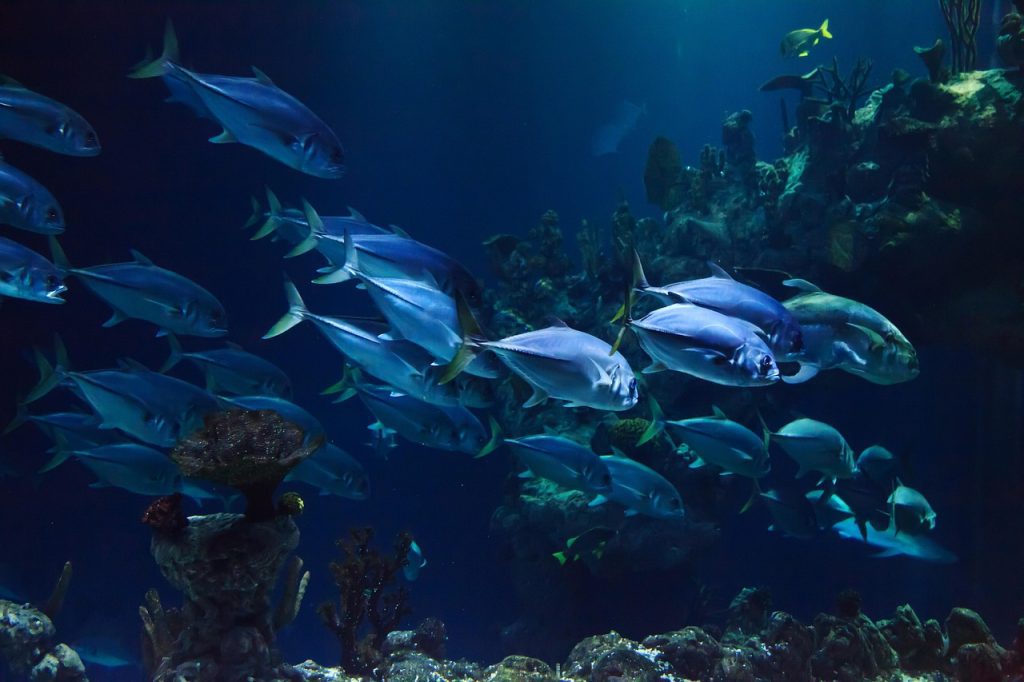Did you know that over 2.2 million species live in our oceans and we’ve only discovered about 10% of them?
Yet, human activity is wiping out aquatic animals faster than we can study them.
That’s why World Aquatic Animal Day (April 3rd) exists – to shine a light on the forgotten creatures of the sea and push for their protection.
But pollution, overfishing, and climate change are pushing many species to extinction. If we don’t act now, we risk losing entire ecosystems and that affects us too.
What Is World Aquatic Animal Day?
World Aquatic Animal Day was launched in 2020 by the Aquatic Animal Law Initiative (AALI).
Unlike other conservation days, this one focuses solely on aquatic animals, not just fish, but whales, octopuses, corals, and even microscopic organisms that keep oceans healthy.
Why April 3rd?
April marks the start of key international environmental discussions, making it the perfect time to push for stronger laws protecting marine life.
This day isn’t just about sharing sad facts, the key goals include:
- Legal protections for aquatic animals (many have none)
- Ending cruel practices like shark finning and dolphin captivity
- Pushing for sustainable fishing to stop overexploitation
How People Celebrate Worldwide
- Beach cleanups (removing plastic before it kills marine life)
- Documentary screenings (Seaspiracy, The Cove)
- Social media campaigns
This day serves to remind us that aquatic animals deserve as much protection as land animals yet they’re often ignored.
The Biggest Threats to Aquatic Animals
A. Overfishing and Bycatch:
- Fact: 90% of big ocean fish (like tuna and sharks) are already gone due to overfishing.
Bycatch (accidental catching of non-target species) kills 300,000 whales/dolphins yearly.
Still, illegal fishing still thrives and is still wiping out species like the vaquita porpoise (only 10 left).
B. Plastic Pollution:
Plastic pollution is one of biggest threats to aquatic animals.
Case in point,
- 8 million tons of plastic enter oceans yearly.
- Sea turtles mistake bags for jellyfish and choke.
- Microplastics are found even in the deepest ocean trenches.
C. Climate Change:
Coral bleaching (from warming waters) has destroyed 50% of reefs since 1950.
- Ocean acidification (from CO2 absorption) dissolves shellfish shells.
- Melting ice threatens Arctic species like polar bears and seals.
D. Captivity and Exploitation:
Dolphinariums and aquariums force intelligent creatures into tiny tanks.
- Shark finning (cutting fins off live sharks) still happens in many countries.
| Key takeaway: These threats are man-made, meaning we can fix them. |
The Most Endangered Aquatic Animals (And Why They Matter)
Here are some of the most endangered aquatic animals in the world:
A. Vaquita Porpoise – The World’s Rarest Marine Mammal
– Status: Critically Endangered (fewer than 10 left)
- Why? Drowning in illegal fishing nets in Mexico’s Gulf of California.
- Why care? Losing them means losing a unique branch of evolution.
B. North Atlantic Right Whale – On the Brink
– Status: Endangered (~350 remain)
- Why? Ship strikes and fishing gear entanglements.
- Why care? They help fertilize plankton, which produces 50% of Earth’s oxygen.
C. Hawksbill Sea Turtle – Hunted for Their Shells
– Status: Critically Endangered
- Why? Poaching for tortoiseshell jewelry.
- Why care? They maintain coral reef health by eating sponges.
D. Southern Bluefin Tuna – Overfished to Near Extinction
– Status: Critically Endangered
- Why? Sushi demand drives illegal fishing.
- Why care? They’re a keystone species in ocean food chains.
💡Thought-provoking fact: If these species disappear, entire ecosystems collapse and that affects our food supply, climate, and survival.
How YOU Can Help Protect Aquatic Animals
You also have a part to play to protect our marine ecosystem.
Here’s how:
A. Ditch Single-Use Plastics:
- Use reusable bottles, bags, and straws.
- Avoid products with microbeads (check labels).
B. Eat Sustainable Seafood:
If you live in an area where seafood can be vetted:
- Download the Seafood Watch app for safe choices.
- Avoid bluefin tuna, shrimp from trawling, and farmed salmon.
C. Support Conservation Groups:
- Donate to Oceana, Sea Shepherd, or WWF Oceans.
- Volunteer for beach cleanups.
D. Spread the Word:
- Share this article (or facts from it) on social media.
- Talk to friends about why aquatic animals matter.
In Conclusion
World Aquatic Animal Day isn’t just another awareness date, it’s a call to action.
The truth is, we depend on healthy oceans more than we realize. They regulate climate, provide food, and house 80% of Earth’s biodiversity.
If aquatic animals die, we suffer too.
But every small action helps. Maybe it’s skipping plastic, choosing sustainable seafood, or sharing this article, you’ll be making a difference.
So this April 3rd, let’s not just remember aquatic animals, let’s fight for them.
Because if the oceans die, we die with them.
